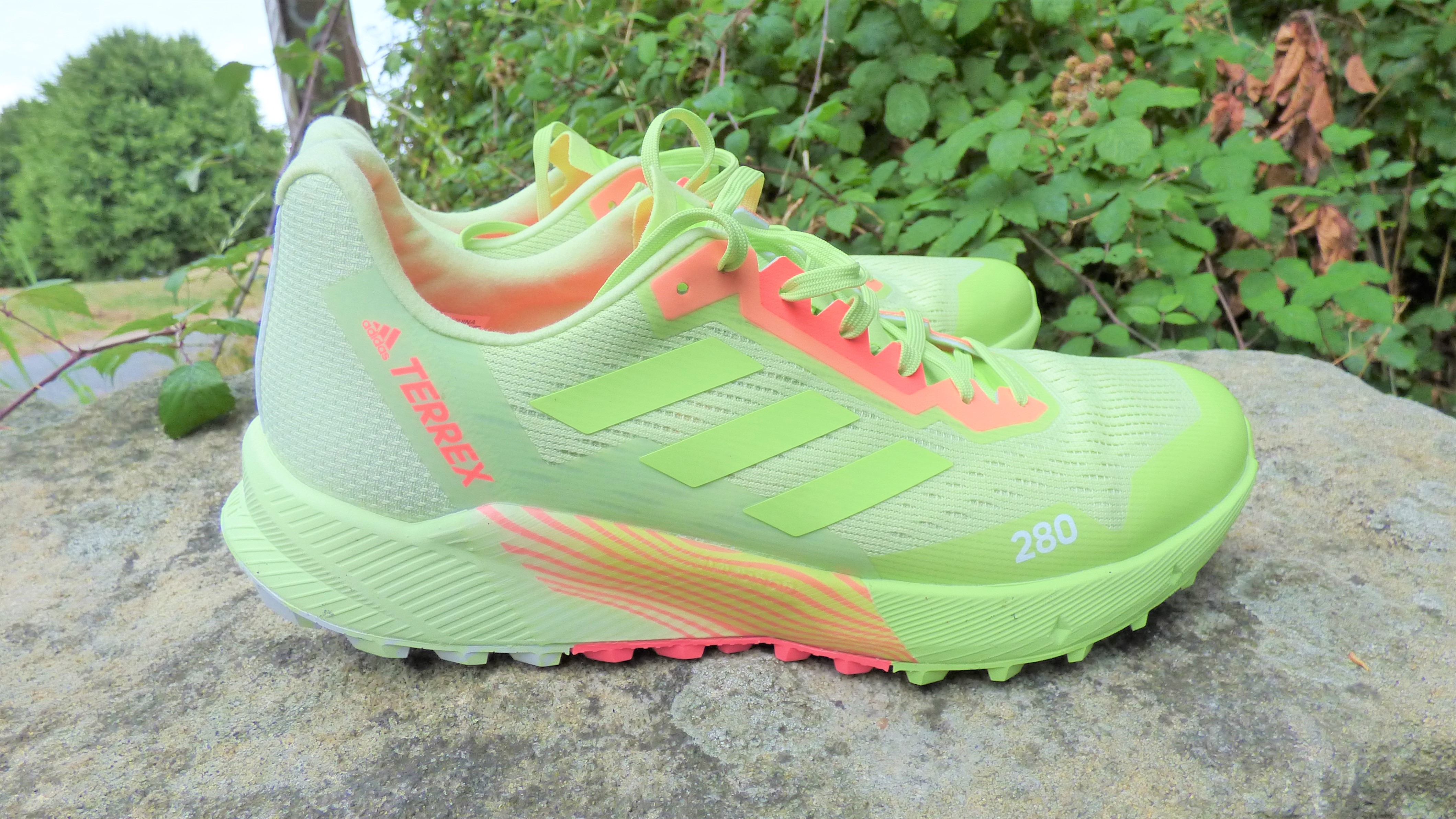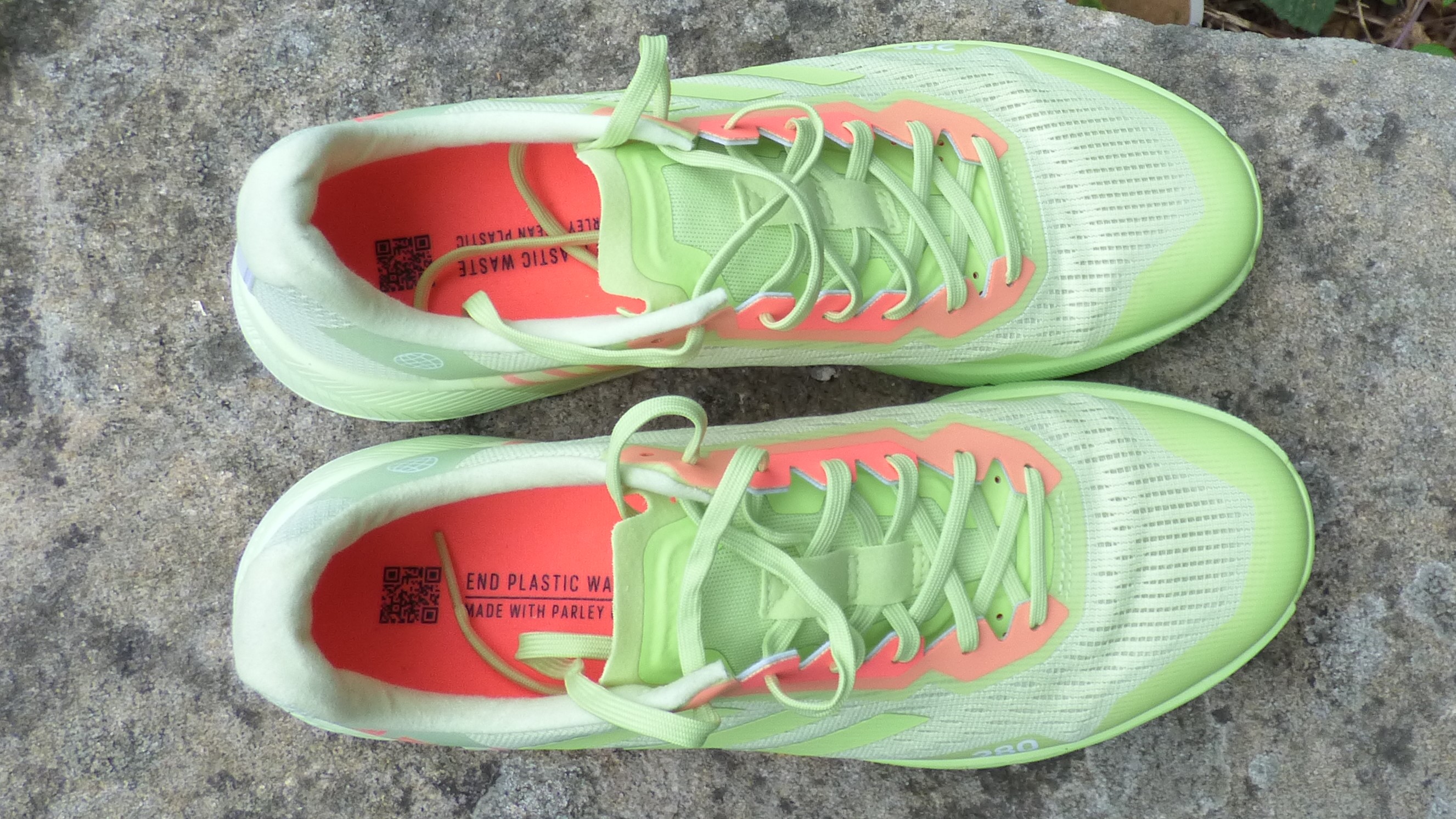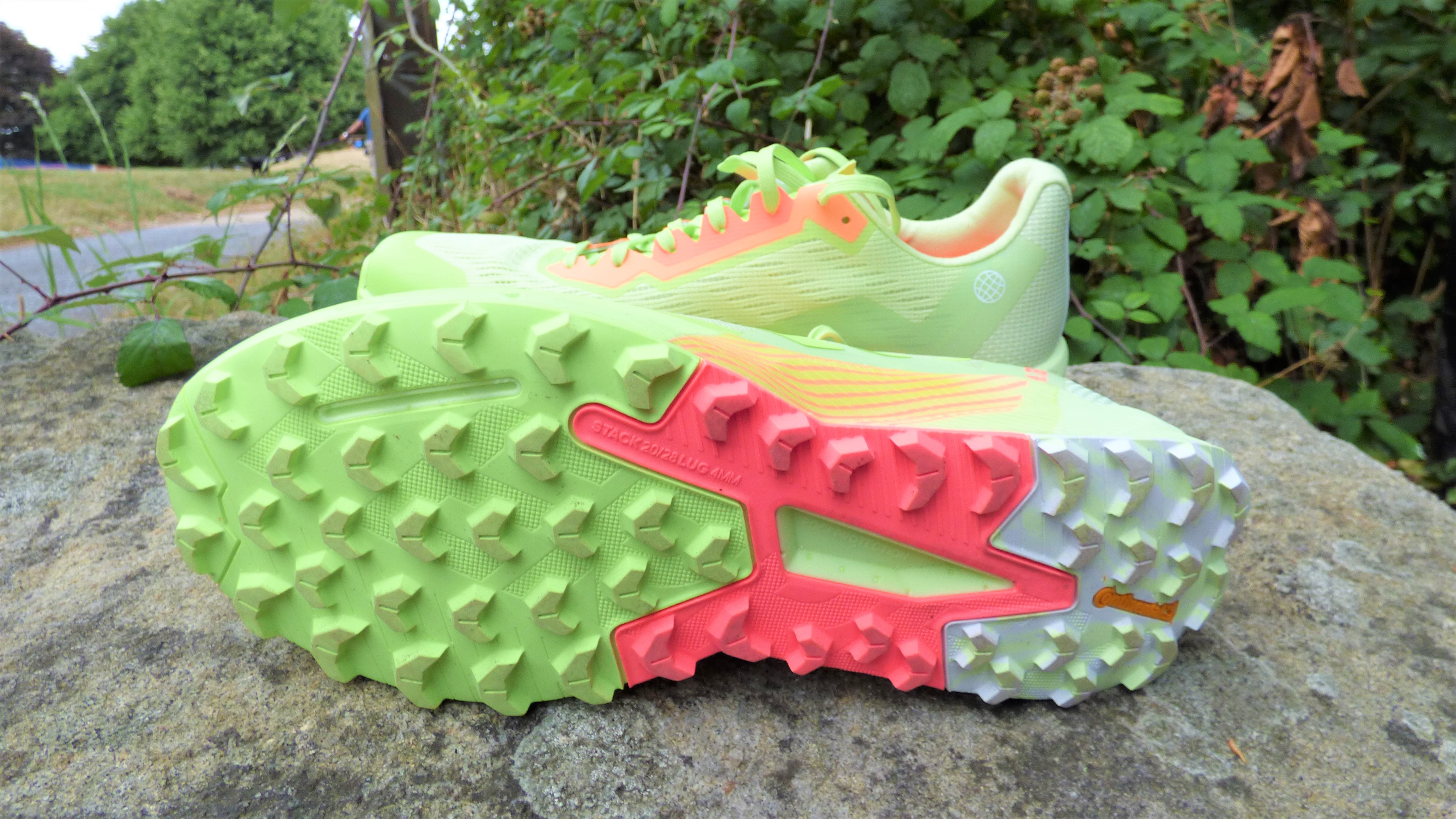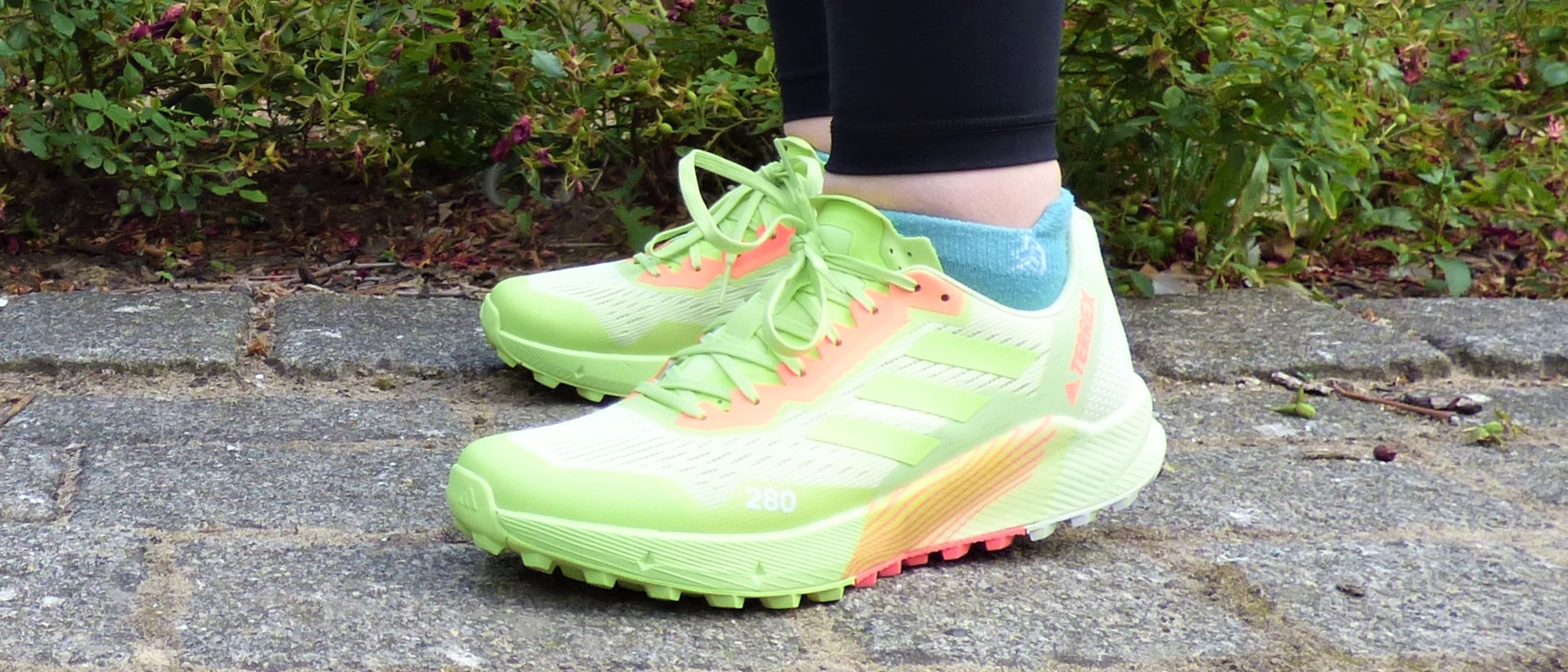Advnture Verdict
The Adidas Terrex Agravic Flow 2 offers a smooth and controlled ride, and feels lighter than it actually is thanks to its well engineered midsole that provides protection and motion control. The fit is snug and comfortable, and there's ample grip in wet mud thanks to lugs that refuse to become clogged, no matter how dirty things get. The only downside is a small gap between the insole and upper that can lead to rubbing on the instep; in all other respects, this shoe is a winner for putting in long miles on non-technical trails.
Pros
- +
Minimal but effective padding
- +
Effective motion-control insert
- +
Intuitively placed reinforcements
- +
Use of recycled materials
Cons
- -
Some rubbing on instep
- -
Relatively heavy
You can trust Advnture
Adidas Terrex Agravic Flow 2 first impressions
The Adidas Terrex Agravic Flow 2 is advertised as a lightweight trail running shoe, but our scales told a different story. Our UK size 9 sample (provided by SportShoes.com) tipped the scale at 332g, making it one of the heavier trail running shoes we've tested in recent months.
This might be partly down to the 'promoderator' – a firm insert embedded in the foam midsole designed to provide motion control and protection as you run – as the shoe's build is otherwise light and minimal.
• List price: $140 / £120
• Weight: 11.7oz / 332g (UK women's 9)
• Sizes: Men's 5.5 - 13.5; women's 3.5-9.5 (US)
• Colors: Almost lime / pulse lime / turbo; wonder steel / magic gray met / pulse lilac; core black / mint ton / cloud white; core black / turbo / blue rush
• Compatibility: Long, non-technical trail runs
The upper is made from an engineered mesh with strategically placed perforations and patches of tougher reinforced material exactly where you need them (more on that later). The collar is only lightly padded, but molded to cup your heel securely, and sits quite high at the back, which is worth bearing in mind if you struggle with trail shoes rubbing your Achilles.
Padding in the tongue is also scant, with only a light strip of foam inside the center, but it's enough to prevent the laces placing undue pressure on the top of your foot, even when the shoe is laced tight.
As part of Adidas' long-running collaboration with environmental organization Parley for the Oceans; the yarn used in the upper is made using a combination of recovered ocean plastic and recycled polyester.
The shoe is finished with a Continental rubber outsole with good-sized lugs affording plenty of grip in wet and slippery conditions.

Adidas Terrex Agravic Flow 2 on the trail
I found the overall fit of the Adidas Terrex Agravic Flow 2 very comfortable; neither wide nor narrow, but with ample wiggle room in the toebox. I prefer trail shoes with a relatively close fit, and the Agravic Flow 2's thin but strong upper felt reassuringly snug. The flat laces have plenty of grip and very little stretch, allowing you to achieve a fit that's as close as you like, and there's ample length for creating a heel lock. There's no risk of your shoe getting sucked off your foot in a bog here.
The high collar didn't rub, even on long runs, which came as a pleasant surprise, and the fit didn't suffer for the paucity of padding. What little foam there is has been artfully placed. However, I did experience some rubbing on my instep. Looking inside, the insole doesn't quite meet the upper, leaving a small gap along the inner edge. You might be able to mitigate this with a pair of the best trail running socks, but mine weren't up to the task.
I did, however, appreciate the sensation of the promoderator insert, which lends a good feeling of forward propulsion to this stiff shoe. You'll notice that your arch feels particularly well supported.

Unlike many of the best trail shoes, the tongue of the Adidas Terrex Agravic Flow 2 is not gusseted (ie attached to the upper along the sides). I was concerned that this might lead to ingress of grit and dirt on loose surfaces, but in practice the tongue was wide enough to keep out irritants.
The upper isn't just reinforced at the heel and toe; in addition to the usual bumpers, there's also extra protection at the arch and the outer ball, which I appreciated on technical terrain. You're more likely to stub your toe on a root than snag your instep, but it can still happen if you're unlucky so the layer of extra material is welcome.
The angle of the lugs on the Continental rubber outsole means that, while you get good purchase underfoot, wet mud tends to slide off the shoe after you lift your foot rather than clogging it up.

Overall, the weight and stiffness of this shoe make it feel like a solid choice for long runs on flatter routes rather than tricky technical courses where dexterity and maneuvrability are key. If not for the rubbing on the instep, it would be easy to recommend for putting in the miles on muddy trails.
Where we tested the Adidas Terrex Agravic Flow 2
The Bath Skyline is a popular route with hikers and runners alike, with spectacular views across the city. Keep an eye out for Sham Castle, a folly designed to look like a medieval castle, but actually built much later to give local entrepreneur Ralph Allen a more interesting view from his house.

Cat is Homes Editor at TechRadar and former editor of Advnture. She's been a journalist for 15 years, and cut her teeth on magazines before moving online. She helps readers choose the right tech for their home, get the best deals, and do more with their new devices.

